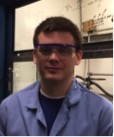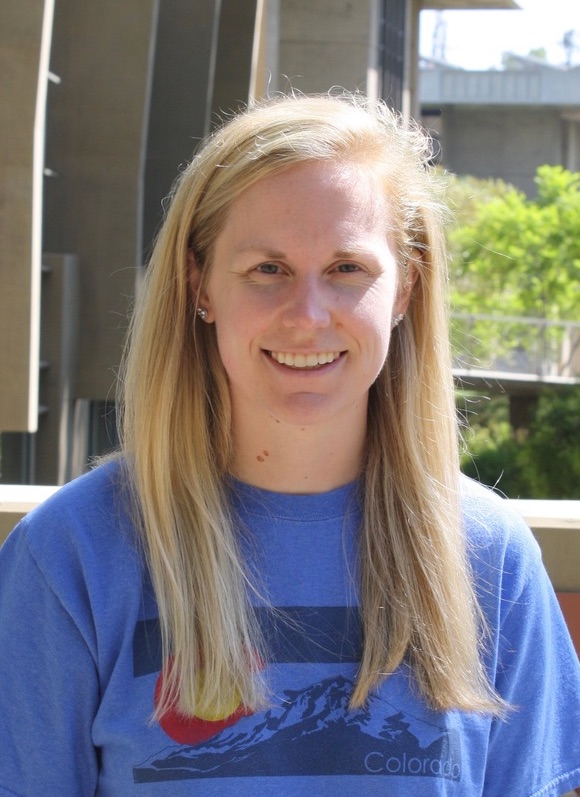Org. Synth. 2017, 94, 109-122
DOI: 10.15227/orgsyn.094.0109
Synthesis of Allenyl Mesylate by a Johnson-Claisen Rearrangement. Preparation of 3-(((tert-butyldiphenyl-silyl)oxy)methyl)penta-3,4-dien-1-yl methanesulfonate
Submitted by Joseph E. Burchick. Jr., Sarah M. Wells, and Kay M. Brummond
1*
Checked by Susan M. Stevenson and Sarah E. Reisman
1. Procedure
A.
4-((tert-Butyldiphenylsilyl)oxy)but-2-yn-1-ol (
1). A 1-L single-necked round-bottomed flask (
Note 1) equipped with a rubber septum, 3 cm Teflon-coated elliptical stir bar, and nitrogen inlet needle through the septum is charged sequentially with
2-butyn-1,4-diol (7.32 g, 85.0 mmol, 2.0 equiv) and
imidazole (3.47 g, 51.0 mmol, 1.2 equiv) (
Note 2) by temporarily removing the septum. The flask is evacuated (3 mmHg) and backfilled with nitrogen, and
dichloromethane (280 mL) is added using an oven-dried 500-mL graduated cylinder by temporarily removing the septum, at which point an oily top-layer forms (Figure 1, left). Homogeneity is achieved by adding
N,N-dimethylformamide (25 mL) using a syringe (Figure 1, middle) (Notes
3 and
4).
tert-Butyldiphenylsilyl chloride (11.69 g, 42.5 mmol, 1 equiv) (
Note 2), weighed out in a tared syringe, is added in one portion at room temperature, causing a white precipitate to form (Figure 1, right).
Figure 1. Progression of reaction mixture
After stirring at 500 rpm for 3 h, the septum is removed and diethyl ether (300 mL) is added to the reaction flask (Note 5). The mixture is transferred to a 2-L separatory funnel and washed with deionized water (1 x 400 mL) and brine (2 x 250 mL). The organic layer is dried over magnesium sulfate (11 g) and filtered through a medium porosity fritted glass vacuum funnel. The filtrate is concentrated via rotary evaporation (40 °C, 10 mmHg) to afford 15.17 g of a clear yellow oil. This residue is purified via flash column chromatography (Note 6). The fractions containing the product are combined and concentrated via rotary evaporation (40 °C, 10 mmHg) followed by further concentration (20 °C, 3.5 mmHg) to afford 9.45 g (69%) (Note 7) of tert-butyldiphenylsilyl)oxy)but-2-yn-1-ol (1) as a clear, pale-yellow oil (Note 8).
B.
Ethyl 3-(((tert-butyldiphenylsilyl)oxy)methyl)penta-3,4-dienoate (
2). A three-necked, 100-mL, round-bottomed flask is equipped with a 2 cm Teflon-coated cylindrical stir bar, a rubber septum, a glass stopper, and a 2-mL Dean-Stark trap. The Dean-Stark trap is fitted with a condenser that is fitted with a septum pierced with nitrogen inlet needle (Figure 2) (
Note 9). The entire apparatus is flame-dried under vacuum (3.5 mmHg), filled with nitrogen, and allowed to cool before
4-((tert-butyldiphenylsilyl)oxy)but-2-yn-1-ol (
1) (9.60 g, 29.6 mmol, 1 equiv) and
triethyl orthoacetate (27.1 mL, 147.9 mmol, 5 equiv) are added sequentially via syringe through the flask septum (
Note 10). The flask is lowered into an oil bath preheated to 150 °C and
propionic acid (0.66 mL, 8.88 mmol, 0.30 equiv) is added dropwise over 2 min via syringe through the flask septum. Additional portions of
propionic acid (0.22 mL, 2.96 mmol, 0.10 equiv) are added after 4 h and 8 h (2 x 0.22 mL).
Figure 2. Photo of apparatus in Step B
After stirring at 450 rpm for 9 h total (Note 11), the flask is removed from the oil bath and allowed to cool to room temperature. The Dean-Stark apparatus and septum are removed and the yellow reaction mixture is transferred to a 250-mL separatory funnel. The 100-mL flask is rinsed with diethyl ether, which is added to the separatory funnel. The mixture is further diluted with diethyl ether (25 mL) and washed with 1 M HCl (1 x 50 mL), saturated NaHCO3 (1 x 50 mL), and brine (1 x 50 mL). The organic layer is dried over MgSO4 (6 g), filtered through a medium porosity fritted-glass funnel and concentrated via rotary evaporation (40 °C, 10 mmHg). The resulting residue is purified via flash column chromatography (Note 12). The fractions containing the product are combined and concentrated via rotary evaporation (40 °C, 10 mmHg) followed by further concentration (20 °C, 3 mmHg) to afford 8.50 g (73%) (Note 13) of 2 as a pale yellow oil (Note 14).
C. 3-(((tert-Butyldiphenylsilyl)oxy)methyl)penta-3,4-dien-1-yl methanesulf-onate (3). A 500-mL, round-bottomed flask equipped with a 3 cm Teflon-coated cylindrical stir bar and a rubber septum with a nitrogen inlet (Note 1) is charged sequentially with diethyl ether (70 mL) (Note 15) and a 1 M lithium aluminum hydride solution in diethyl ether (33.6 mL) (Note 16) (33.6 mmol, 1.4 equiv), both of which are transferred via cannula. The resulting solution is cooled to -78 °C using a dry ice-acetone bath. In a separate flask ethyl 3-(((tert-butyldiphenylsilyl)oxy)methyl)penta-3,4-dienoate (2) (9.5 g, 24 mmol, 1 equiv) is dissolved in diethyl ether (10 mL) and added dropwise to the reaction flask via syringe over a period of 3 min. The reaction is stirred at 550 rpm at -78 °C for 2 h (Note 17) at which point sodium potassium tartrate solution in deionized water (20 g of a 315 g/L solution) is added slowly over 5 min via syringe. The flask is allowed to warm to room temperature and the contents are vacuum filtered through a 250-mL medium porosity fritted-glass funnel. The 500-mL flask is rinsed with diethyl ether (3 x 50 mL), which is passed through the filter. The filtrate is transferred to a 1-L separatory funnel, washed with deionized water (1 x 200 mL) and brine (1 x 200 mL). The organic layer is dried over MgSO4 (10 g), filtered, concentrated via rotary evaporation (40 °C, 10 mmHg) and further concentrated (20 °C, 3.5 mmHg) to afford 8.38 g (99%) of 3-(((tert-butyldiphenylsilyl)oxy)methyl)penta-3,4-dien-1-ol as a clear, pale yellow oil that is carried forward without further purification (Notes 18 and 19). A 2-L round-bottomed flask is fitted with a rubber septum with a nitrogen inlet and a 4 cm Teflon-coated elliptical stir bar (Note 1). The septum is removed and dichloromethane (580 mL) (Note 20) is added via a flame-dried 1-L, graduated cylinder. The septum is replaced and the system is flushed with nitrogen. 3-(((tert-Butyldiphenylsilyl)oxy)methyl)penta-3,4-dien-1-ol (8.38 g, 23.8 mmol, 1 equiv) is diluted in dichloromethane (10 mL) and added via syringe. The solution is cooled to 0 °C in an ice bath, and triethylamine (4.62 mL, 33.3 mmol, 1.4 equiv) (Note 21) is added in one portion via syringe through the septum. Methanesulfonyl chloride (2.58 mL, 33.3 mmol, 1.4 equiv) is added dropwise over 5 min. After the addition is complete, the reaction is immediately allowed to warm to room temperature by removing the ice bath. The progress of the reaction was monitored (Note 22) and after 2 h the reaction mixture is transferred to a 2-L, separatory funnel using dichloromethane (2 x 20 mL) to rinse the 2-L flask. The organic layer is washed with deionized water (2 x 400 mL) and brine (1 x 400 mL). The organic layer is dried over MgSO4 (14 g) and concentrated via rotary evaporation (40 °C, 10 mmHg). The residue is purified via silica gel flash column chromatography (Note 23). The fractions containing the product are combined and concentrated via rotary evaporation (40 °C, 10 mmHg) followed by further concentration (20 °C, 3 mmHg) to afford 9.61 g (93%) (Note 24) of mesylate 3 as a clear yellow oil (Note 25).
2. Notes
1. All glassware was flame-dried under vacuum (3.5 mmHg) and filled with nitrogen while still hot. Unless stated otherwise, reactions were performed under a nitrogen atmosphere.
2.
2-Butyn-1,4-diol (99%),
imidazole (99%), and
tert-butyldiphenylsilyl chloride (98%) were purchased from Sigma-Aldrich and used as received.
3.
Dichloromethane was purchased from Fisher Scientific and dried via pressure filtration through an activated alumina column.
N,N-dimethylformamide (99.8%) was purchased from Sigma-Aldrich and used as received.
4. Depicted are the heterogeneous reaction mixture (left picture), the homogeneous solution after the addition of a minimum amount of
N,N-dimethylformamide (middle picture), and the reaction mixture after the addition of
tert-butyldiphenylsilyl chloride where a white precipitate has formed (right picture).
5. The reaction was monitored via silica gel thin layer chromatography (TLC) (2.5 x 5 cm plates purchased from Silicycle) using EtOAc:Hexanes (1:4) as the mobile phase. UV (shortwave) was used as the visualization method. The R
f for product
1 is 0.25.
6. The residue was loaded neat onto a column (7 cm diameter) of silica gel (220 g). The initial mobile phase was 10% EtOAc-hexanes. After collecting 200 mL of eluent, the fractions were collected in 16 x 125 mm test tubes. The mobile phase was changed to 30% EtOAc-hexanes as the desired product
1 began to elute (ca. fractions 69-85). The fractions were analyzed by silica gel TLC using EtOAc:Hexanes (1:4) as the mobile phase. The R
f for product
1 is 0.25. The R
f for
2-butyn-1,4-diol is 0.03.
7. A second run on full scale (25 mmol) provided 9.77 g (71%) of product
1.
8.
4-((tert-Butyldiphenylsilyl)oxy)but-2-yn-1-ol (
1) has the following spectro-scopic properties:
1H NMR
pdf(500 MHz, CDCl
3) δ: 1.06 (s, 9H), 1.31 (t,
J = 6.2 Hz, 1H), 4.20 (dt,
J = 1.8, 6.2 Hz, 2H), 4.36 (t,
J = 1.8 Hz, 2H), 7.38-7.47 (6H, m), 7.71 (dd,
J = 1.8, 8.0 Hz, 4H).
13C NMR
pdf(126 MHz, CDCl
3) δ: 19.3, 26.8, 51.3, 52.8, 83.6, 84.4, 127.8, 130.0, 133.2, 135.8. FTIR (NaCl, film, cm
-1): 3345, 2858, 1428, 1373: calc'd for C
20H
23O
2Si (M+H
+) - H
2: 323.1467; found: 323.1460. The purity of the product was determined to be 99% by quantitative
1H NMR using dimethyl fumarate as an internal standard.
9. The submitters note that when larger Dean-Stark traps were used, the yield decreased, presumably due to inefficient removal of ethanol. The checkers used a 5-mL Dean-Stark trap due to lack of access to smaller Dean-Stark traps and observed lower yields than that reported by the submitters.
10.
Triethyl orthoacetate (97%) and
propionic acid (99.5%) were purchased from Sigma-Aldrich and used as received.
11. The reaction progress was monitored via silica gel TLC using EtOAc:Hexanes (1:4) as the mobile phase. UV (shortwave) was used as the visualization method. The R
f for the product is 0.63. The R
f for the starting material is 0.25.
12. The residue was loaded neat onto a column (7 cm diameter) of silica gel (200 g). The mobile phase was EtOAc:Hexanes (1:9). After collecting 400 mL of eluent, the fractions were collected in 16 x 125 mm test tubes. The desired product
2 began to elute in ca. fraction 54-68. The fractions were analyzed by silica gel TLC using EtOAc:Hexanes (1:4) as the mobile phase.
13. When the reaction was performed on a 15.0 mmol scale, 4.53 g (77%) of product
2 was obtained. The submitters obtained 9.49 g (81%) of product
2 on 29.6 mmol scale employing a 2-mL Dean-Stark trap.
14.
Ethyl 3-(((tert-butyldiphenylsilyl)oxy)methyl)penta-3,4-dienoate (
2)
has the following spectroscopic properties:
1H NMR
pdf(400 MHz, CDCl
3) δ: 1.06 (s, 9H), 1.24 (t,
J = 7.1 Hz, 3H), 3.13 (t,
J = 2.5 Hz, 2H), 4.13 (q,
J = 7.1 Hz, 2H), 4.27 (t,
J = 2.5 Hz, 2H), 4.76 (quint,
J = 2.5 Hz, 2H), 7.36-7.44 (m, 6H), 7.67 (dd,
J = 1.5, 7.9 Hz, 4H).
13C NMR (100 MHz, CDCl
3) δ: 14.4, 19.4, 26.9, 35.1, 60.8, 64.2, 76.8, 97.3, 127.8, 129.8, 133.6, 135.7, 171.2, 206.8. FTIR (NaCl, film, cm
-1): 2857, 1964, 1738, 1428, 1177. HRMS: calc'd for C
24H
31O
3Si (M+H
+): 395.2043; found: 395.2049. The purity of the product was determined to be 99% by quantitative
1H NMR using dimethyl fumarate as an internal standard.
15.
Diethyl ether (laboratory grade) was purchased from Fisher Scientific and dried via pressure filtration through an activated alumina column.
16.
Lithium aluminum hydride (1 M solution in
diethyl ether) was purchased from Sigma-Aldrich and used as received.
17. The reaction was monitored via silica gel TLC using EtOAc:Hexanes (1:4) as the mobile phase. UV (shortwave) was used as the visualization method. The R
f for the product is 0.30. The R
f for the starting material is 0.63.
18. The crude allenyl alcohol has the following spectroscopic properties:
1H NMR
pdf(500 MHz, CDCl
3) δ: 1.07 (s, 9H), 2.22 (t,
J = 6 Hz, 1H), 2.34 (sep,
J = 2.9 Hz, 2H), 3.77 (q,
J = 6 Hz, 2H), 4.19 (t,
J = 2.5 Hz, 2H), 4.73 (quint,
J = 2.5 Hz, 2H), 7.37-7.46 (m, 6H), 7.68 (dd,
J = 1.5 Hz, 8.0 Hz,
4H).
13C NMR
pdf(126 MHz, CDCl
3) δ: 19.4, 26.9, 33.3, 61.4, 65.3, 76.4, 100.3, 127.9, 129.9, 133.3, 135.8, 206.5.
19. A small sample of the crude allenyl alcohol (0.785 g) was purified via SiO
2 flash column chromatography (2.5 cm column, 45 g silica, EtOAc-hexanes (1:4) as the eluent). The purified product has the following spectral properties:
1H NMR
pdf(500 MHz, CDCl
3) δ: 1.07 (s, 9H), 2.23 (t,
J = 6 Hz, 1H), 2.34 (sep,
J = 3.0 Hz, 2H), 3.77 (q,
J = 6 Hz, 2H), 4.19 (t,
J = 2.5 Hz, 2H), 4.73 (quint,
J = 2.5 Hz, 2H), 7.37-7.46 (m, 6H), 7.69 (dd,
J = 1.5, 8.0 Hz,
4H).
13C NMR
pdf(126 MHz, CDCl
3) δ: 19.4, 26.9, 33.3, 61.4, 65.4, 76.5, 100.3, 127.8, 129.9, 133.3, 135.8, 206.6. FTIR (NaCl, film, cm
-1): 3352, 2931, 1589, 1427, 1112. HRMS: calc'd for C
22H
29O
2Si (M+H
+): 353.1937; found: 353.1920.
20.
Methylene chloride was purchased from Fisher Scientific and was dried via pressure filtration through an activated alumina column.
21.
Triethylamine (99%) was purchased from Fisher and used as received.
Methanesulfonyl chloride (99.5%) was purchased from Acros and used as received.
22. The reaction was monitored via silica gel TLC using EtOAc-hexanes (1:4) as the mobile phase.
p-Anisaldehyde and heat were used as the visualization method. The alcohol is visualized as a purple spot; the mesylate
3 is visualized as a yellow spot. The R
f of the mesylate (
3) is 0.31. The R
f for the starting material is 0.30.
23. The residue was loaded neat onto a column (7 cm diameter) of silica gel (175 g). The mobile phase was EtOAc-hexanes (1:4). After collecting 100 mL of eluent, the fractions were collected in 16 x 125 mm test tubes. The desired product
3 began to elute in ca. fraction 60-75. The fractions were analyzed by silica gel TLC using EtOAc:Hexanes (1:4) as the mobile phase.
24. When the reaction was performed on a 12.0 mmol scale, 4.76 g (92%) of product
3 was obtained.
25.
3-(((tert-Butyldiphenylsilyl)oxy)methyl)penta-3,4-dien-1-yl methanesulfonate (
3)
has the following spectroscopic properties:
1H NMR
pdf(500 MHz, CDCl
3) δ: 1.07 (s, 9H), 2.51 (sep,
J = 3.4 Hz, 2H), 2.98 (s, 3H), 4.20 (t,
J = 2.5 Hz, 2H), 4.32 (t,
J = 7.0 Hz, 2H), 4.77 (quint,
J = 2.5 Hz, 2H), 7.37-7.45 (m, 6H), 7.66 (dd,
J = 1.5, 8.0 Hz, 4H).
13C NMR
pdf(100 MHz, CDCl
3) δ: 19.4, 27.0, 28.5, 37.6, 64.9, 68.3, 77.7, 98.6, 127.9, 129.9, 133.4, 135.7, 205.7. FTIR (NaCl, film, cm
-1): 2857, 1357, 1174. HRMS: calc'd for C
23H
31O
4SSi (M+H
+): 431.1712; found: 431.1712. The purity of the product was determined to be 97% by quantitative NMR using dimethyl fumarate as an internal standard.
Working with Hazardous Chemicals
The procedures in
Organic Syntheses are intended for use only by persons with proper training in experimental organic chemistry. All hazardous materials should be handled using the standard procedures for work with chemicals described in references such as "Prudent Practices in the Laboratory" (The National Academies Press, Washington, D.C., 2011; the full text can be accessed free of charge at
http://www.nap.edu/catalog.php?record_id=12654). All chemical waste should be disposed of in accordance with local regulations. For general guidelines for the management of chemical waste, see Chapter 8 of Prudent Practices.
In some articles in Organic Syntheses, chemical-specific hazards are highlighted in red "Caution Notes" within a procedure. It is important to recognize that the absence of a caution note does not imply that no significant hazards are associated with the chemicals involved in that procedure. Prior to performing a reaction, a thorough risk assessment should be carried out that includes a review of the potential hazards associated with each chemical and experimental operation on the scale that is planned for the procedure. Guidelines for carrying out a risk assessment and for analyzing the hazards associated with chemicals can be found in Chapter 4 of Prudent Practices.
The procedures described in Organic Syntheses are provided as published and are conducted at one's own risk. Organic Syntheses, Inc., its Editors, and its Board of Directors do not warrant or guarantee the safety of individuals using these procedures and hereby disclaim any liability for any injuries or damages claimed to have resulted from or related in any way to the procedures herein.
3. Discussion
Allenes represent an important class of compounds and building blocks that show great utility and versatility in a number of synthetic transformations.
2 This
Organic Syntheses article utilizes a Johnson-Claisen rearrangement, reduction, and functional group transformation to provide a 3,3-disubstituted allene functionalized with a methanesulfonyl group. The preparation of allene building blocks via the Johnson-Claisen rearrangement of propargylic alcohols is a robust, but less commonly used protocol than the transition metal catalyzed S
N2' reaction between propargyl alcohol derivatives and organometallic reagents; in part, this may be attributed to the less readily apparent retroanalysis. Moreover, the synthetic steps used to generate this building block attest to the relative stability of the allene moiety.
In the past two decades there has been a multitude of studies investigating allenyl precursors in intramolecular cycloaddition reactions. These cycloadditions include [2 + 2]
3, [4 + 2]
4, [2 + 2 + 1]
5, and even tandem cyclizations of bis-allenes to afford complex polycyclic products.
6 The Brummond group has reported a [2 + 2] microwave-assisted cycloaddition of allene-ynes to generate bicyclo[4.2.0]octadienes and bicyclo[5.2.0]nonadienes. One example is shown in Scheme 1 where the conversion of allene-yne
4 affords the spirocyclic compound
5 with complete transfer of chirality from the allene to the stereogenic carbon of
5.
7
Scheme 1. Microwave assisted [2 + 2] cyclization of tethered allene-yne
Narasaka and Brummond have applied a [2 + 2 + 1] Pauson-Khand reaction to tethered allene-ynes to generate fused dienones.
8, 9 For example, the conversion of allene-yne
6 to 5,7,5-tricyclic ring system
7 was effected in 79% yield by dropwise addition of the APKR precursor to the rhodium catalyst (Scheme 2).
10 These conditions were developed subsequent to original report where substrate
6 and the rhodium catalyst were heated together at 90 °C to give the APKR product in 64% yield after removal of the TBDPS group.
11 In 1995, Wender et al. reported the first example of a transition metal- catalyzed [4 + 2] cycloaddition of a tethered allene, generating bicyclo[4.3.0]nonane and bicyclo[4.4.0]decane ring systems.
Scheme 2. APKR used to access biologically active guaianolide frameworks
Both chemoselectivity and stereoselectivity were achieved by varying the metal catalyst. This offers a unique route to rapidly generate a diverse array of compounds from a single starting material (Scheme 3).
12
Scheme 3. Regioselectivity of cyclization controlled by transition metal
Toste and coworkers reported that by varying the electronic properties of a Au(I)- bound ligand, tethered allene-dienes can selectively cyclize in a [4 + 2] or [4 + 3] manner, generating the fused 5,6- or 5,7-bicyclic ring systems, respectively. The selectivity is thought to originate from the ability of the gold catalyst to stabilize the cationic transition state, which is generated during the cycloaddition reaction (Scheme 4).
13 It is interesting to note that a seven-membered ring is formed in one pathway, while the smaller more energetically favorable six-membered ring is formed in the other. This methodology offers a unique route to less common, more synthetically challenging ring systems.
Scheme 4. Ligand controlled cyclization of allene-dienes
It is the goal of this reported procedure to showcase the stability of the allene functionality over a variety of synthetic conditions, as well as provide a synthetically useful building block for the preparation of more complex small molecules. These examples represent a fraction of the literature reports utilizing a tethered allene to rapidly and efficiently construct complex molecular skeletons.
Appendix
Chemical Abstracts Nomenclature (Registry Number)
2-Butyn-1,4-diol: 2-butyn-1,4-diol; (110-65-6)
Imidazole: 1H-Imidazole; (288-32-4)
tert-Butyldiphenylsilyl chloride: Benzene, 1,1'-[chloro(1,1-dimethylethyl)silylene]bis-; (58479-61-1)
Triethylorthoacetate: Ethane, 1,1,1-triethoxy-; (78-39-7)
Propionic acid: Propanoic acid; (79-09-4)
Lithium aluminum hydride: Aluminate(1-), tetrahydro-, lithium (1:1), (T-4)-Coordination Compound; (16853-85-3)
Methanesulfonyl chloride: Mesyl chloride; (124-63-0)

|
Joseph E. Burchick Jr. was born near Pittsburgh, Pennsylvania. He graduated from Allegheny College with a B.S. in chemistry in 2013 and began his graduate studies at the University of Pittsburgh in 2014. Joe is currently pursuing his Ph.D. in chemistry, applying the allenic Pauson-Khand reaction to the synthesis of biologically active products under the advisement of Kay M. Brummond. |

|
Kay M. Brummond received her education and training as a synthetic chemist from the University of Nebraska-Lincoln, Pennsylvania State University, and the University of Rochester. She was a member of the faculty at West Virginia University and is currently Professor and Chair of the Chemistry Department at the University of Pittsburgh. Her research program focuses on developing new synthetic methods to expedite the preparation and expansion of Nature's toolbox of biologically relevant compounds. |

|
Sarah M. Wells grew up in Colorado Springs, CO. In 2010, she began her research experience as an REU student at the University of Connecticut under Professor Christian Bruckner. In 2011, she earned her B.S. in Chemistry from Grove City College in Grove City, PA. Sarah then joined the Brummond group at the University of Pittsburgh, Pittsburgh, PA where she studied an allenic Pauson-Khand approach towards guaianolide natural product analogs. |

|
Dr. Susan (Suzie) Stevenson was born and raised in Granger, Indiana. In 2011, she received her B.S. in chemistry from Hope College, where she worked with Prof. Jeffrey B. Johnson studying the mechanism of Rh-catalyzed alkene carboacylation. In the same year, she began her doctoral studies in the lab of Prof. Eric Ferreira, working in both the areas of enyne cycloisomerization and photoredox catalysis utilizing Cr-based photocatalysts. After obtaining her Ph.D. from the University of Georgia in 2016, Suzie joined the lab of Prof. Sarah Reisman at Caltech as an NIH postdoctoral fellow. Her current research is focused on the total synthesis of complex natural products. |
Copyright © 1921-, Organic Syntheses, Inc. All Rights Reserved